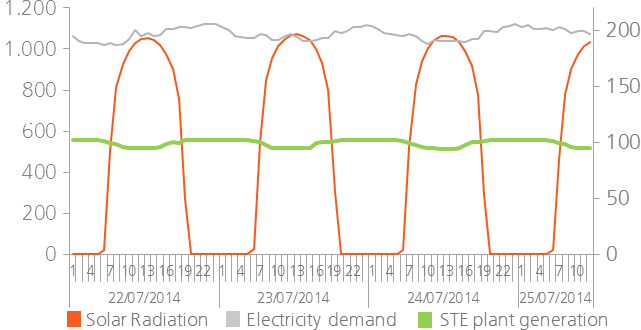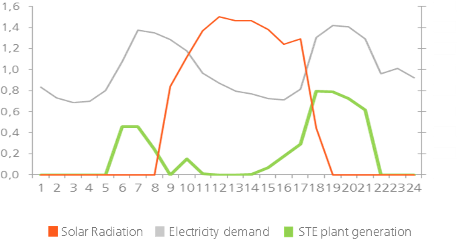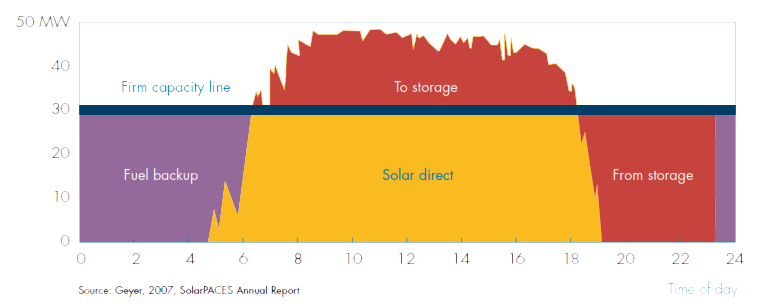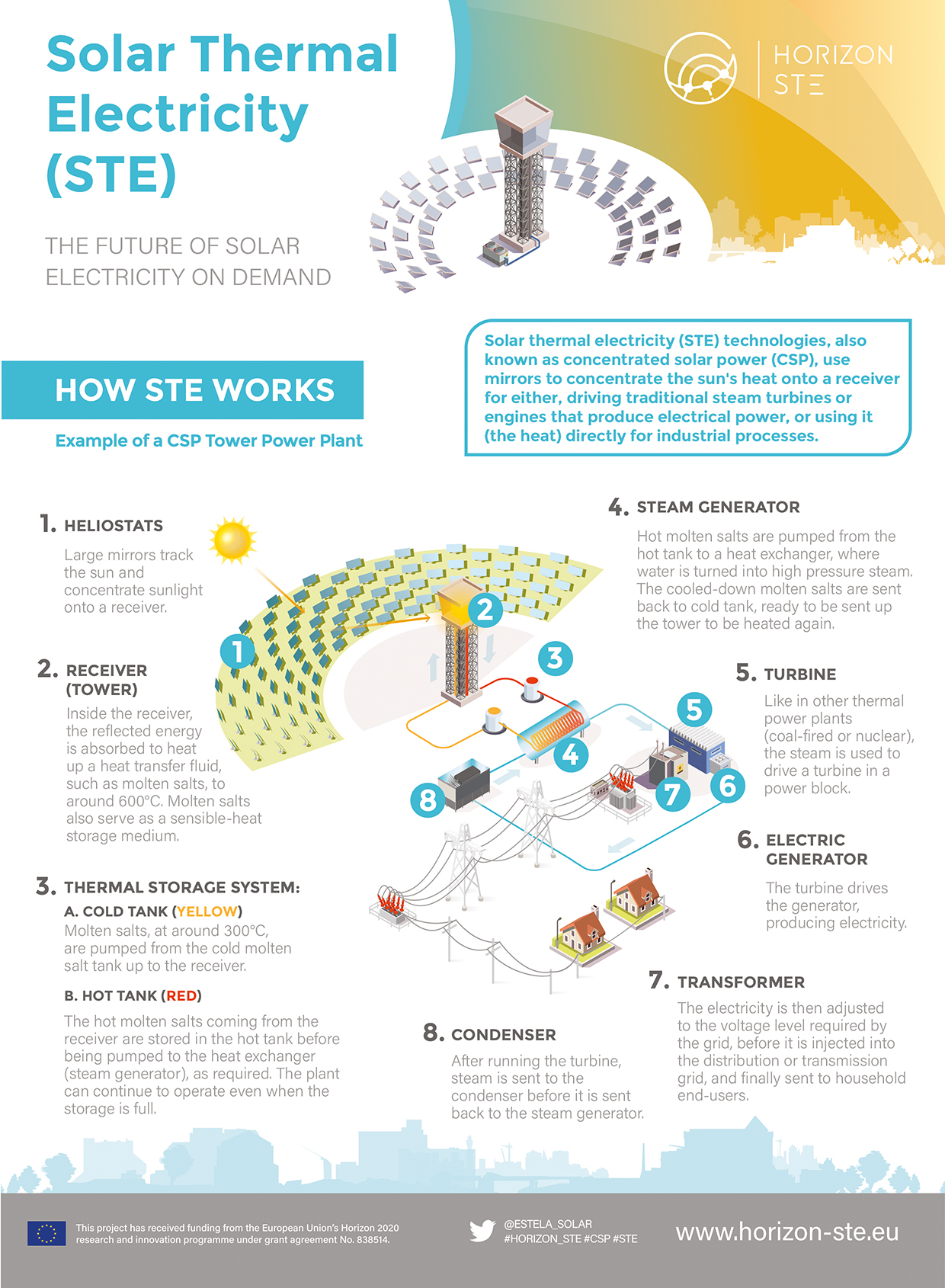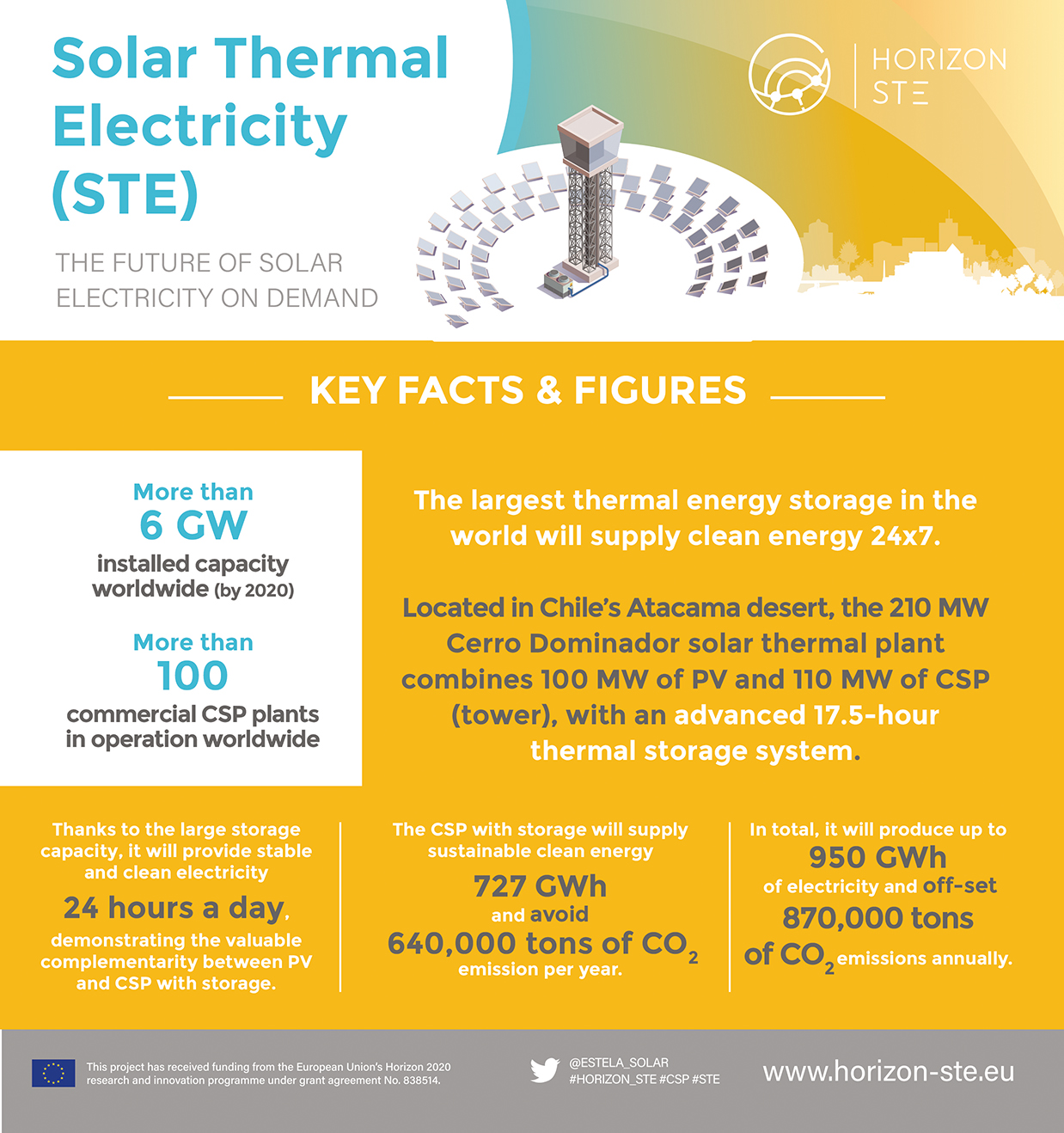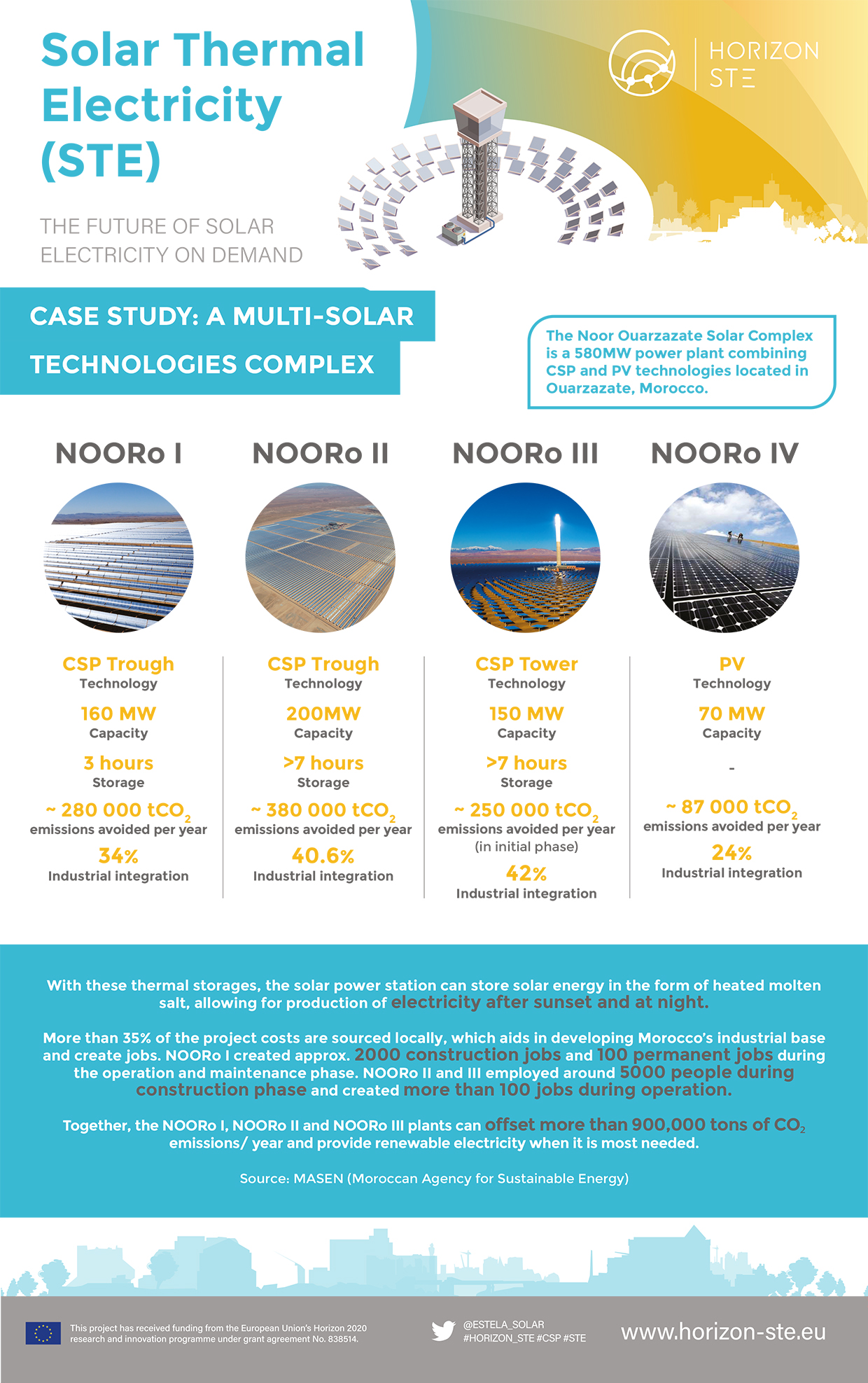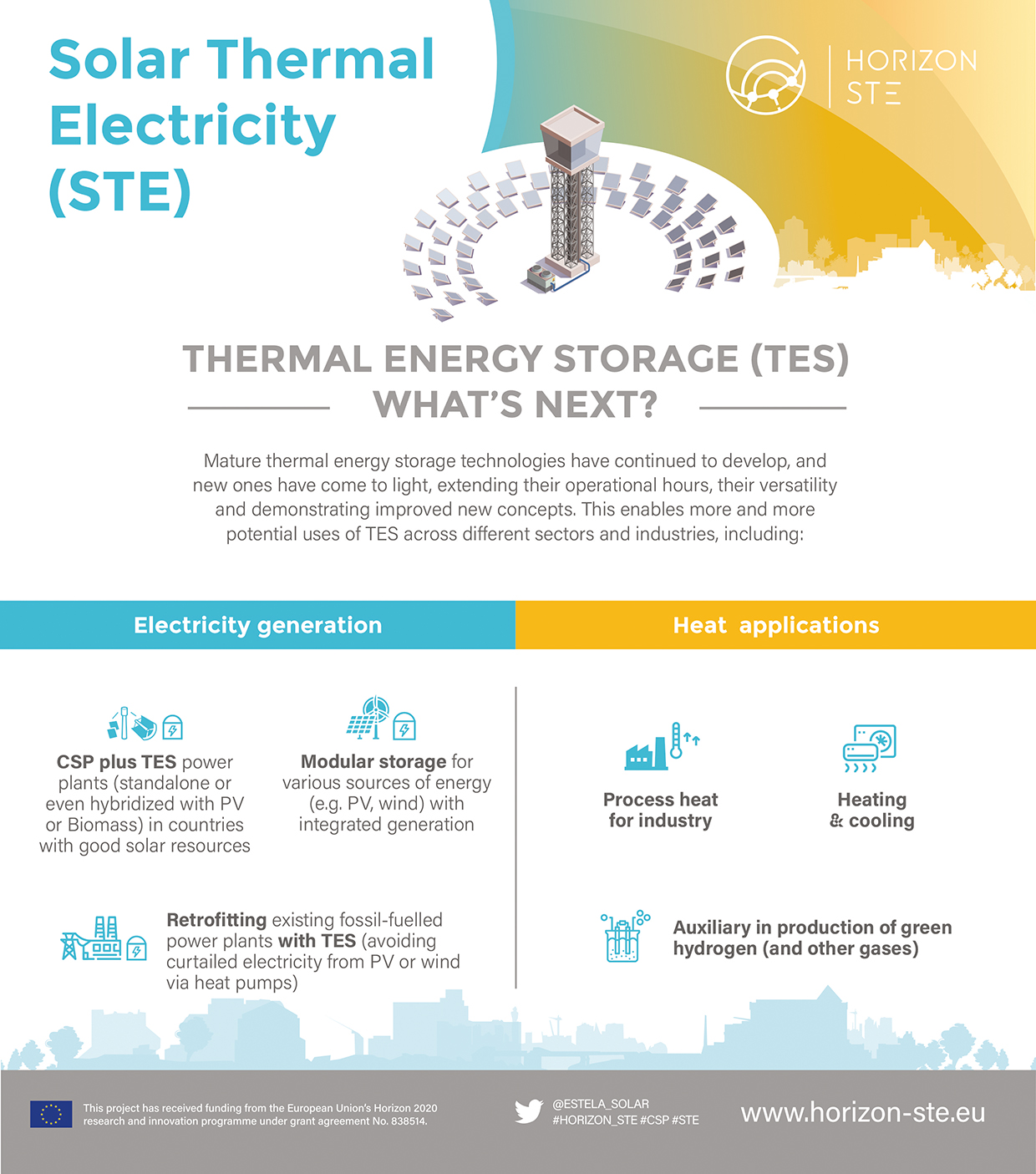Hybridisation possibilities
For CSP plants, hybridisation is the combination of the use of solar energy with heat coming from other sources, such as biomass or conventional fossil fuels.
The advantages of hybridisation are:
- Making it possible to convert the collected solar power with higher efficiency;
- Ensuring dispatchability to cover peak demand and deliver energy on demand;
- Overcoming the variability of the solar radiation;
- Reducing start-up time; and
- Minimising the generation cost (LCOE).
Steam produced with solar energy can be used to boost the capacity of a conventional fossil-fuel power plant, saving fuel, reducing CO2 emissions and achieving higher solar energy conversion efficiencies.
All CSP plants (Parabolic Troughs, Central Receivers and Linear Fresnel reflectors), with or without storage, can be equipped with fuel-powered backup systems that help to prepare the working fluid for start-up, regulate production and guarantee capacity (Figure below). The fuel burners (which can use fossil fuel, biomass, biogas or, possibly, solar fuels) can provide energy to the HTF or the storage medium or directly to the power block. In areas where DNI is less than ideal, fuel-powered backup makes it possible to almost completely guarantee the production capacity of the plant at a lower cost than if the plant depended only on the solar field and thermal storage. Providing 100% firm capacity with only thermal storage would require significantly more investment in a larger solar field and storage capacity, which would produce relatively little energy over the year.
Fuel burners also boost the conversion efficiency of solar heat to electricity by raising the working temperature level; in some plants, they may be used continuously in hybrid mode. CSP can also be used in hybrid mode by adding a small solar field to fossil fuel plants such as coal plants or combined-cycle natural gas plants in so-called integrated solar combined-cycle plants (ISCC) There are operating examples in several northern African countries with solar fields of 25 MWe equivalent and, in the United States, there are examples with a larger solar field (75 MWe.) A positive aspect of solar fuel savers is their relatively low cost: with the steam cycle and turbine already in place, only components specific to CSP require additional investment.



